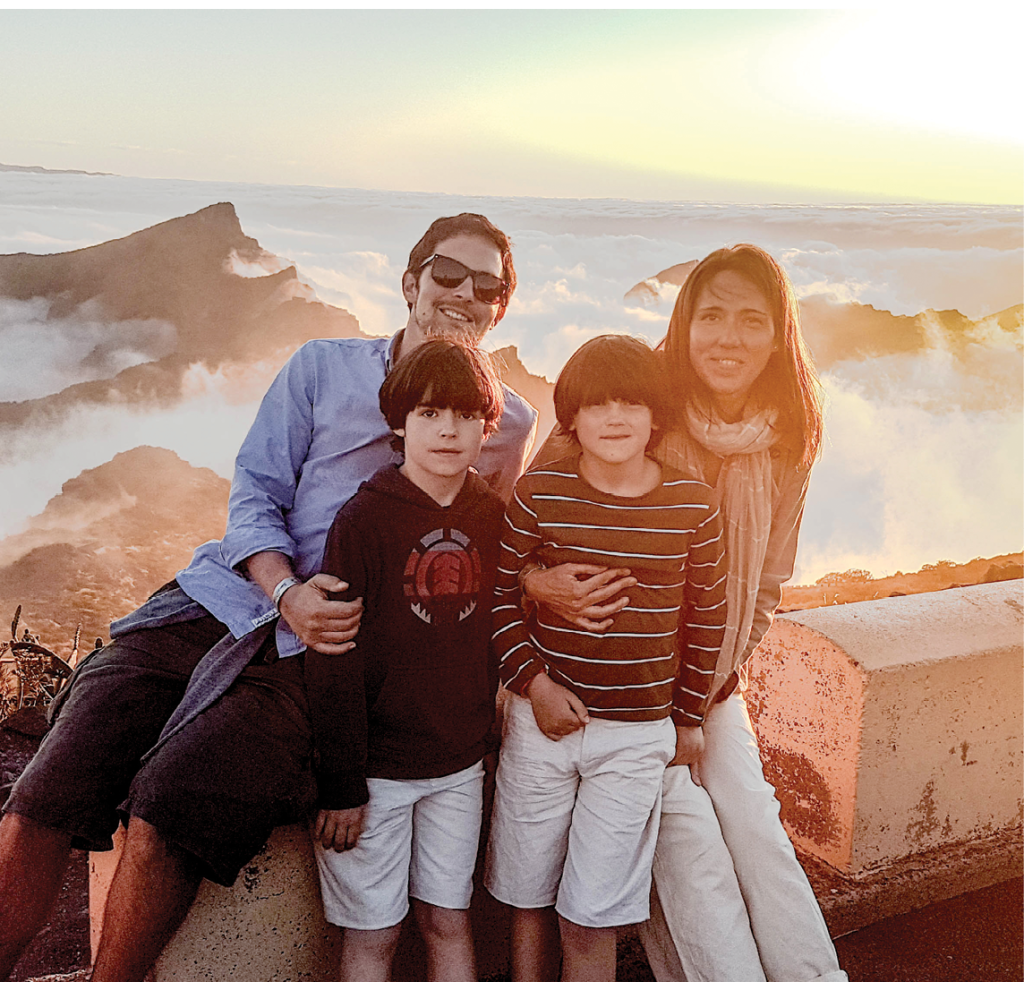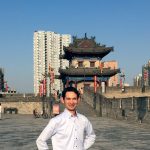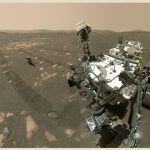The impact Ignacio Fernández Hernández, Galileo Authentication and High Accuracy Manager for the European Commission, has had on the EGNOS and Galileo programs, as he does his part to advance GNSS.
How do we explain what took a rather unobtrusive boy from an unobtrusive family, an only child, from a city in Spain to foreign lands and then to the capital of Europe, to play an essential role in the European Union’s flagship space program? How did he get from there to there? Shall we say fate, or destiny? Or was it just hard work?
Ignacio Fernández Hernández has worked very hard, and relentlessly, mostly quietly, and with discipline and creativity, and the fruits of his labor are clear to see in the long list of his academic distinctions, publications and patents, and, even more so, in his accumulated technical achievements with the EGNOS and Galileo programs.
Fertile Soil
Fernández was the kind of kid who grows up to become an engineer. He was calm and studious, and enjoyed being on his own, and he was fascinated, as all engineers should be, by computers, videogames, science fiction, and Marvel comic books.
He is an authentic “gato madrileño,” a pedigreed “Madrid cat,” that is a native-born Madrilenian whose parents were native-born Madrilenians. One senses he is proud of that fact, and well he might be. Madrid is one of the world’s great cities, the capital of Spain and one of the most populous cities in Europe. With its impressive remains, and its glorious renaissance, baroque and neoclassical art and architecture, today’s Madrid is nevertheless a thoroughly modern city, alive with energy and excitement, nurturing poets, musicians and artists of the highest order, but also scientists, researchers and engineers.
Fernández’s father was an economist by training but an artist at heart, as was Fernández’s paternal grandfather. “They were both amateur painters,” Fernández said. “I may have inherited some of my more chaotic side from my fathers. As a child I liked drawing, and then, later on, as a teenager, I got very interested in music and even played in some indie bands.” We did say “mostly” quietly.
For the balancing elements in his character, he credits his mother: “I learned discipline from my mother; she came from a more conservative family where many worked for the army. She studied pharmacy and was the first woman in her direct family line to earn a university degree. She always wanted me to become a medical doctor.” Fernández didn’t do that, but we suspect his mother is quite happy with the direction her son, the Doctor of Philosophy, did take.
“I always liked more science-related matters,” Fernández said. “When it was time for university, I hesitated between telecommunications and industrial engineering, choosing the latter because it was more generic, but also because the engineering school was five minutes from home—that’s a lot of travel time saved over a six-year degree. The telecommunications might have come in handy, like when I find myself having to deal with signal theory, but I can’t complain.”
Fernández continued to shine in college. He earned his MSc degree in industrial engineering, specializing in electronics, in 2001, from Madrid’s Escuela Técnica Superior de Ingenieros Industriales ICAI, scoring a grade of 10/10 on his thesis. That’s perfect. And he followed up by landing the perfect job, his first one, working for GMV Aerospace and Defence.
Backing up slightly, we note he had already found the perfect partner, in a bar in Madrid. “That’s where I met Paloma,” he said, “but we might have met somewhere else, because we were from the same neighborhood and had many interests and friends in common.
“It was the summer after my freshman year. I was playing drums in a band and after we met, I invited her to come see us play. That was when we started going out together. I never have enjoyed much being on stage,” he added, with a wink, “but it did pay off that time.” The pair have been together ever since.

GNSS from the get-go
Fernández was hired by GMV in 2001. “Getting that job was really a matter of luck,” he said. “Isabel Castrillo was recruiting engineers out of ICAI to work in aerospace, and she became my first boss.”
He started working with GNSS right away. GMV was building a platform to validate the EGNOS Central Processing Facility (CPF). “I knew almost nothing about GNSS,” he said, “so I was mainly in charge of configuring drivers and ensuring everything worked. Later, I was assigned more tasks and got familiar with EGNOS, GPS and so on. After two years, I was detached to Langen, Germany, as part of the assembly, integration and validation (AIV) team, where EGNOS was being AIVed in a big workshop, ‘the factory.’”
Fernández was responsible for the Central Processing Facility—Processing Set (CPFPS), the central element of EGNOS calculating GPS integrity and corrections. “It was like working on Noah’s ark,” he said, “with a bit of everything, processing and control stations, signal uplink racks, receivers… Of course, things never worked the first time, but eventually it all came together. In the control center, some kilometers from the factory, someone sent a command and a few seconds later a little box turned green on the screen, which meant the EGNOS signal was being broadcast all over Europe from the geostationary satellite. It was a great and exciting time.
“In my years as a system validation engineer,” Fernández said, “I gained a lot of respect for AIV and ops teams. Their work is not as visible as some others’, but there is some great engineering that takes place in those teams, and every signal we provide depends on them.”
By 2004, Fernández had been promoted to EGNOS test manager, a job that took him to all the EGNOS control centers at the time—to Italy, Spain, Germany and the UK—to test new EGNOS versions. “Unlike many of my friends, I never applied for an Erasmus scholarship when I was at university, although I had always longed to spend time abroad. Now, I was finally getting the chance to travel, and the fact that it was for EGNOS made it that much more satisfying.”

Galileo, OSNMA and HAS
In 2008, Fernández joined the European Union’s GNSS Supervisory Authority, the GSA, the organization that would become the European Agency for the Space Program (EUSPA). In 2009, he moved on to the European Commission (EC), where he is currently Galileo Authentication and High Accuracy Manager.
“About a decade ago,” Fernández said, “we had the EU GNSS Regulation, which said Galileo had to provide a ‘commercial service’ [CS] as an added value.” The CS concept would eventually evolve into separate services, the Open Service Navigation Message Authentication (OSNMA) and the High Accuracy Service (HAS). A third, the Signal Authentication Service (SAS) is now in the works. Fernández has been instrumental in the development of all these new services.
“The idea for OSNMA,” Fernández said, “was to use Galileo OS spare bandwidth to ‘digitally sign’ the message. We proved early on that we could do something simple and efficient, but Galileo is a complex system, with many stakeholders and priorities, and not everyone shared our enthusiasm. It was like jumping on a train that had already departed.
“HAS was initially foreseen as a broadcast data service from commercial providers. However, we got the instruction from top management, who deserve full credit for the move, to develop our own service for free, and our work shifted to defining the best possible HAS with the infrastructure already in place.”
In his typical style, Fernández credits others for the success of OSNMA and HAS, including EUSPA, EU-funded research projects AALECS and NACSET, the EU Joint Research Center (JRC), GSC and WP1X engineering support, the European Space Agency (ESA) and his many excellent colleagues at the European Commission. “The beginnings were very modest,” he said, “but there are many teams involved now, so any success we may see with HAS and OSNMA is the result of their work.” He won’t say it, so we will—it’s the result of his work too.

Working order
“We are close to officially launching the OSNMA initial service,” Fernández said, “after transmitting the signal publicly for three years, with very good stability and performance. The service will be here just in time, given the recent cases of spoofing in Europe, Russia and the Middle East. Our HAS initial service was launched in 2023, and since then we’ve been providing very precise Galileo and GPS orbit, clock and code bias corrections worldwide, very reliably, allowing dm-level or even cm-level positioning with PPP [Precise Point Positioning] algorithms.”
New HAS- and OSNMA-based applications are appearing across all continents. In Europe, these services are considered flagship capabilities, used in smart tachographs, for satellite orbit determination, timing, in drones and consumer applications, and, Fernández said, “We like to think they have helped improve the way Galileo is perceived.”
All of this has certainly improved the way Fernández is perceived. With a grin, he explained, “When I started, CS was not precisely the highest priority for the Galileo program, and I had to bear with office colleagues who, in a friendly way, teased me about how ‘important’ my new responsibilities were.” We will forgive Fernández now if he feels a “friendly” satisfaction, the one-time Ugly Duckling, at last in full flight. He and his team are currently working on the upcoming SAS as well as the so-called HAS Phase 2.
Still Going Strong
Fernández and GNSS hit it off from the start, and he’s never cooled. “It was love at first sight,” he said. “And, as in any good relationship, there are things that you only discover with time. I’ve come to appreciate the breadth of satnav engineering, a science of sciences. We use the work of Kepler, Newton, Einstein, a lot of geophysics and geodesy for atmospheric propagation and reference frames, control and signal theory, a lot of algebra and statistics. And of course this is mixed with cutting-edge engineering, like the two-mm2 chips that carry multi-GNSS, multi-band receivers.
“Finally, I’ve met so many talented and nice people from all regions of the world. I feel very lucky to be part of this community. And the importance of satnav for society is undeniable, so I like to think we are doing our little bit toward building a better world.”
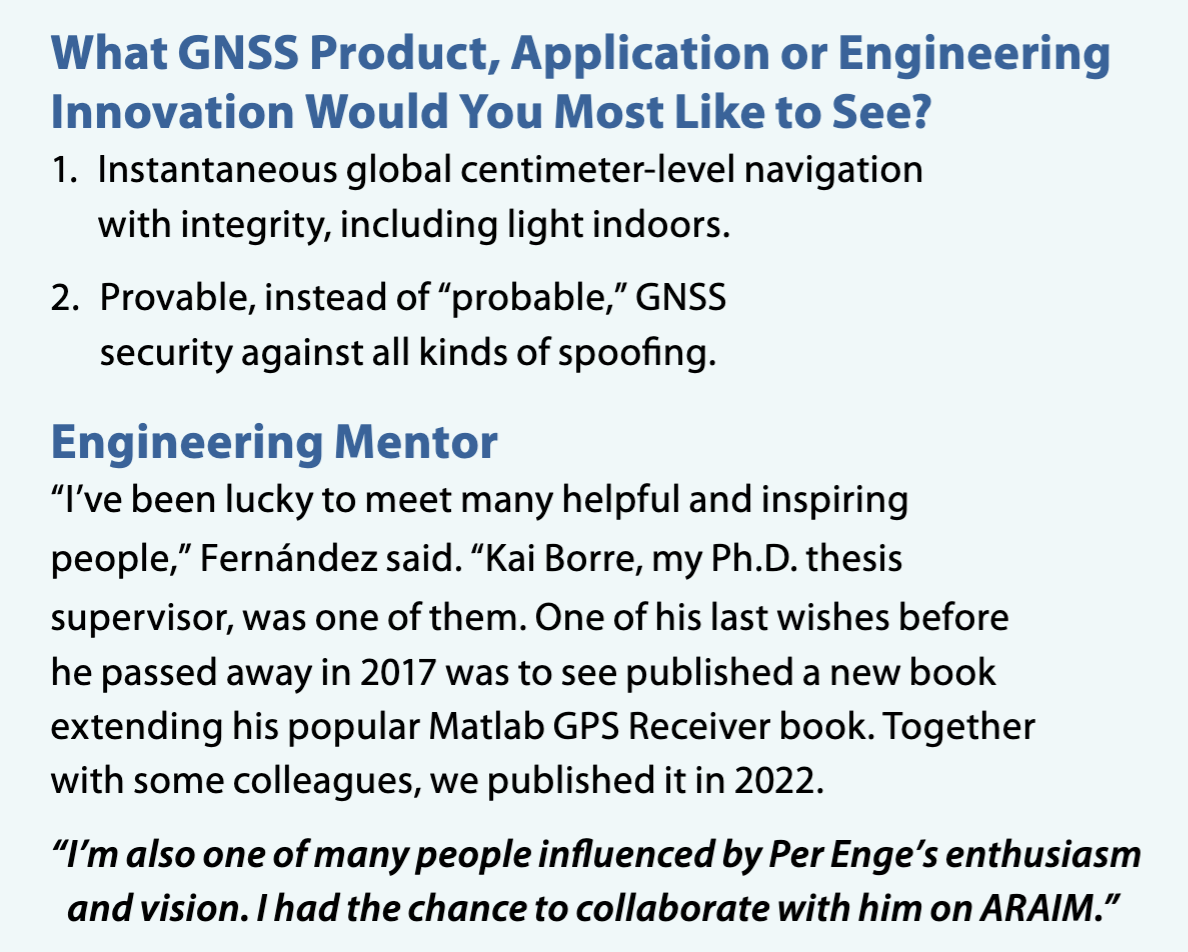

Somehow, in between those amazing projects, Fernández managed to earn a Graduate Certificate in Management from Boston University, Brussels Campus, a master’s in business administration degree (MBA) from the London Business School, and a Doctor of Philosophy degree (Ph.D.) from Aalborg University, making his entire family very proud. He also has been a visiting scholar at Stanford University’s GPS Lab and currently serves as visiting professor of Electrical Engineering at Katholieke Universiteit Leuven.
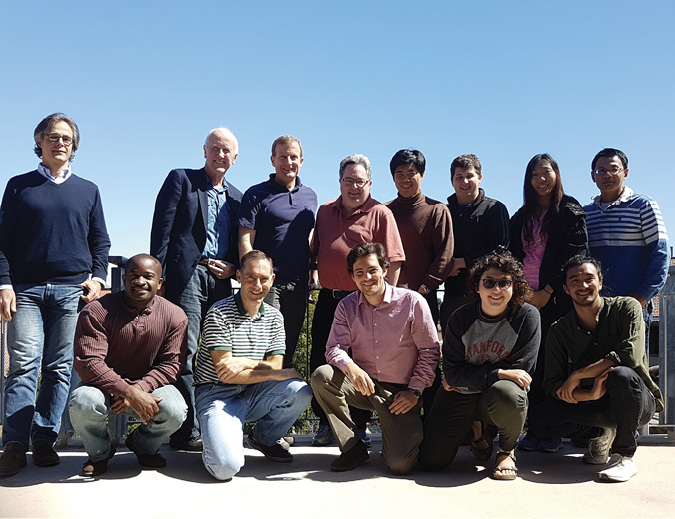
Home Base
And all along the way, there has been Paloma. “I met my wife when we were both very young. She is a journalist, but she quit her job when we came to Brussels, which I will always appreciate. But she has done so many other things, helped me in so many ways. I owe it all to her, more than to anyone else, any of my own personal achievements.”
We know of at least two things Paloma has given Fernández. They’re called Alejandro and Nachete (little Ignacio). “My boys are still pre-teenagers,” Fernández said, “so it’s early to say which way they will go in life. I tell them I’m a very tolerant father and will support them in any subject they want to pursue… within engineering.” Another wink means he’s kidding, we think. “Anyway, they do seem to be science oriented. One assembled his own computer at a very young age. I will support them, they same way my mother supported me, even when she didn’t get the medical doctor she wanted.”
By the way, Fernández still enjoys music, and while he doesn’t play as much as he used to, he can occasionally be seen performing at ION GNSS+ open mic night. Yes, the photo is real.
“Usually, during the week, we have a lot of stuff going on,” he said, “so when we have a free moment we like to just hang around at home with the kids.” He doesn’t get to see his parents as often as he’d like, but he stays in touch. And to Madrid he will always return.
Fernández is an engineer at heart. “That’s what I enjoy most,” he said. “It has to do with trying to approach things analytically and objectively, being curious about how things work, and looking for solutions.” He seems to have found the solutions to a few exciting problems, not least the one called life. And, yes, it was probably the hard work that got him there.
